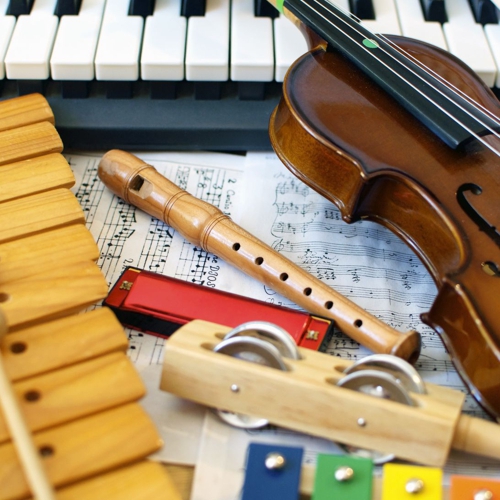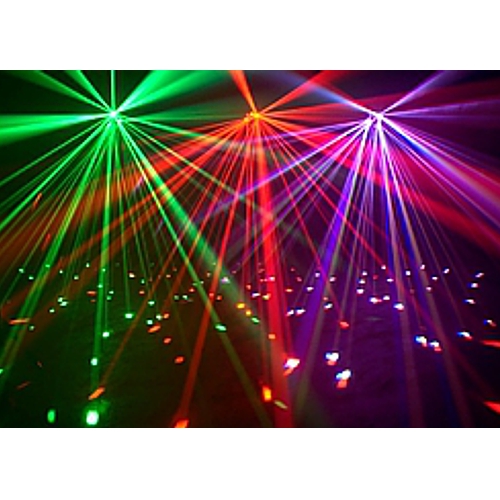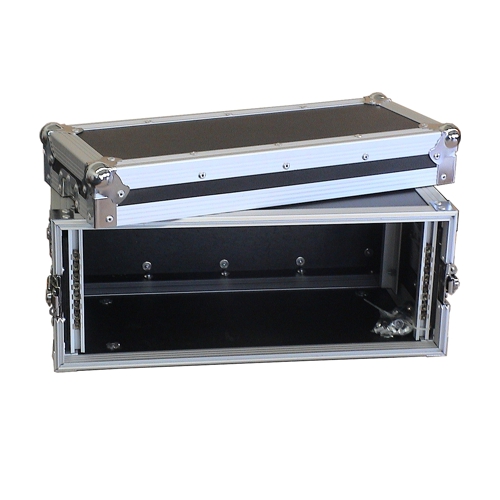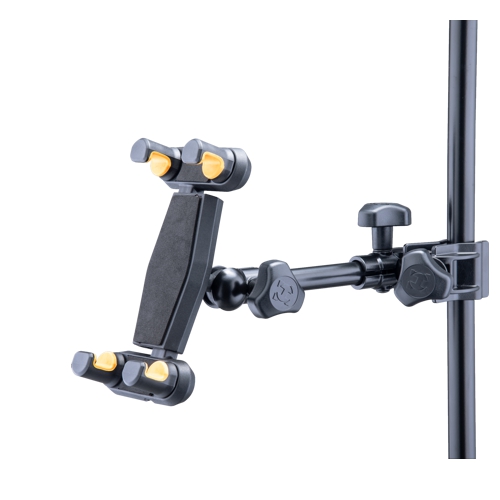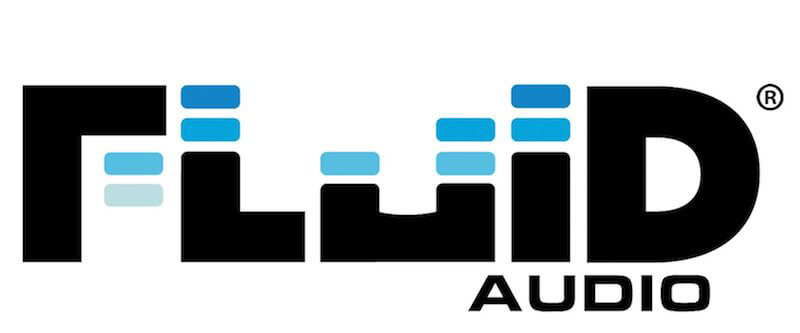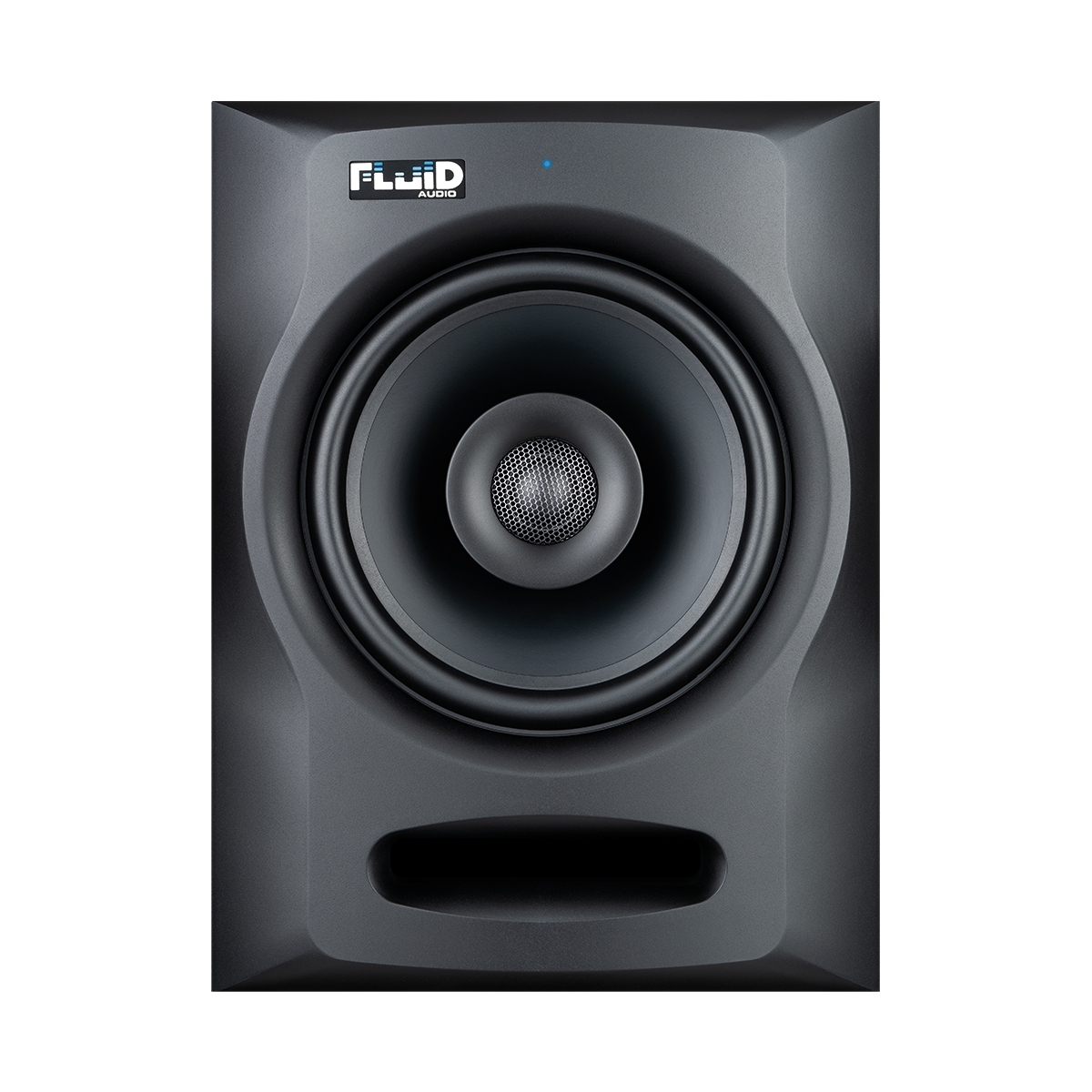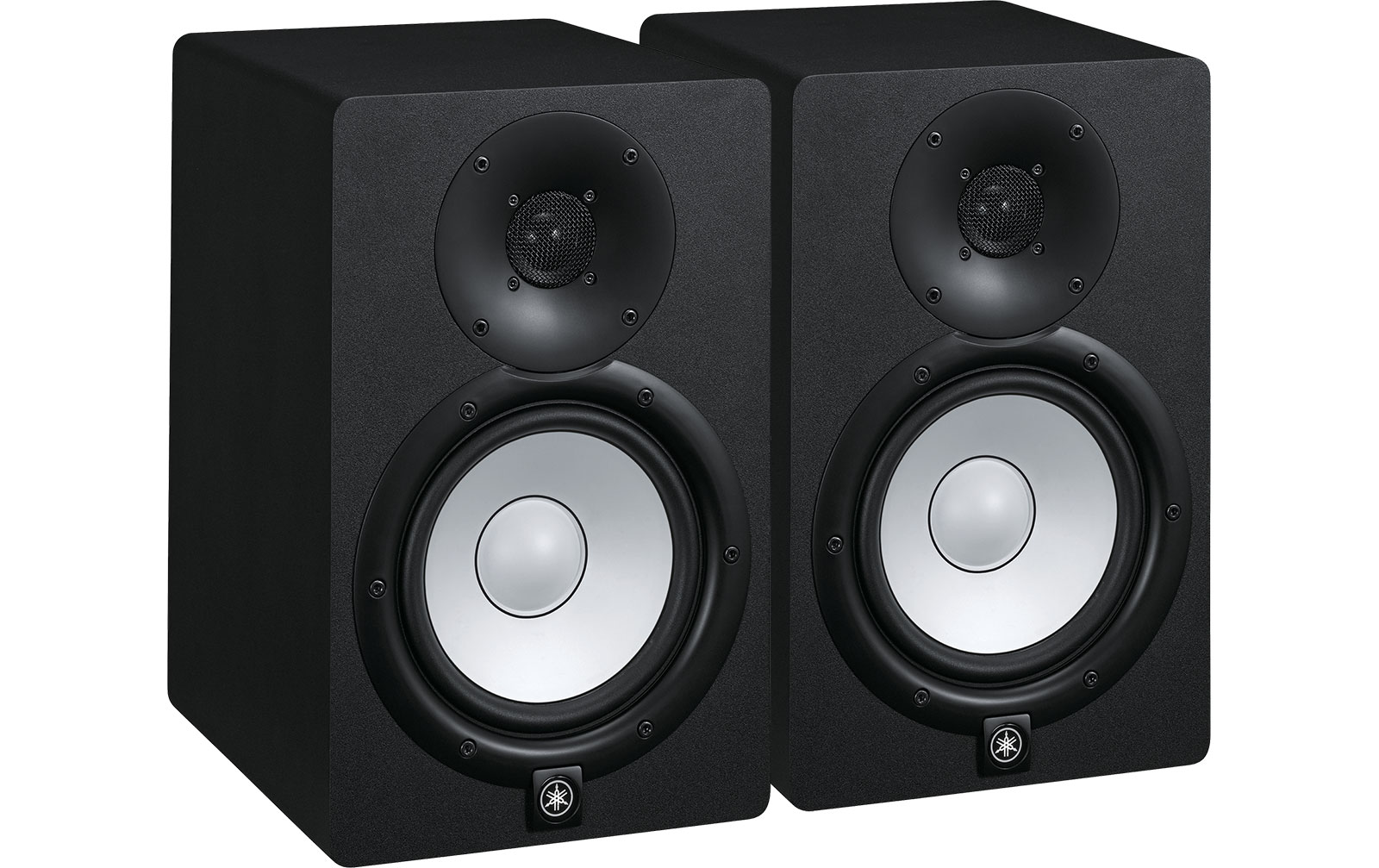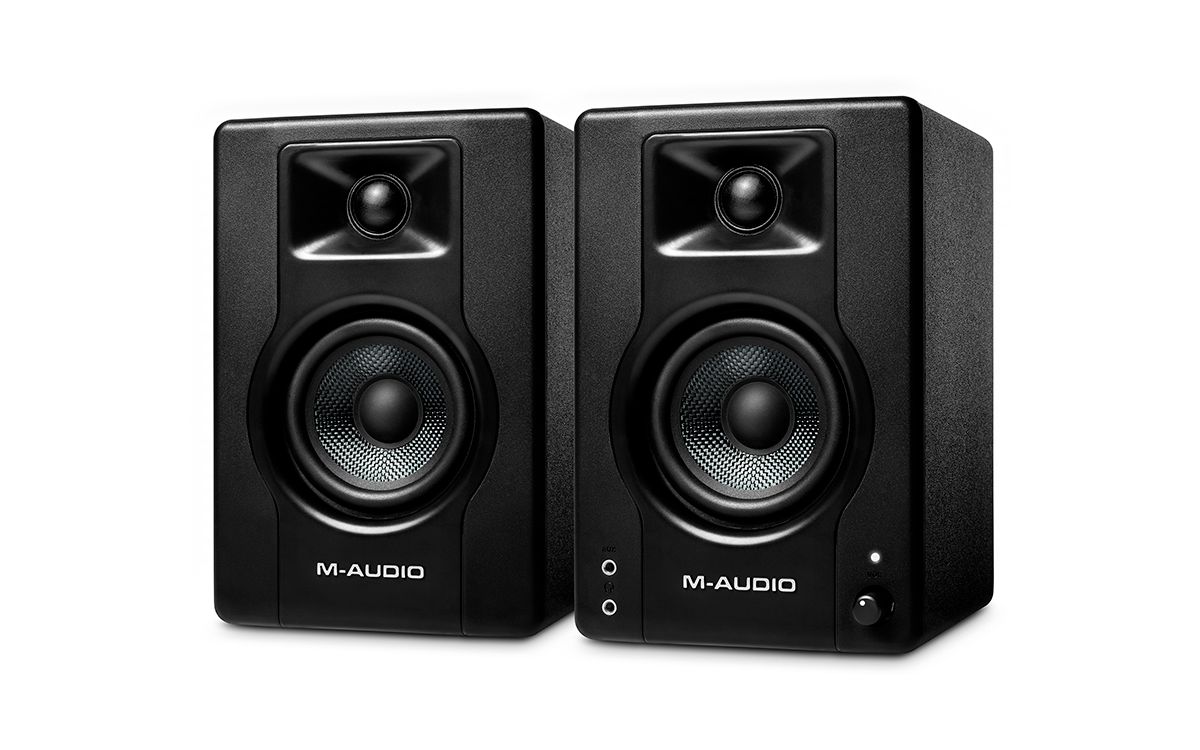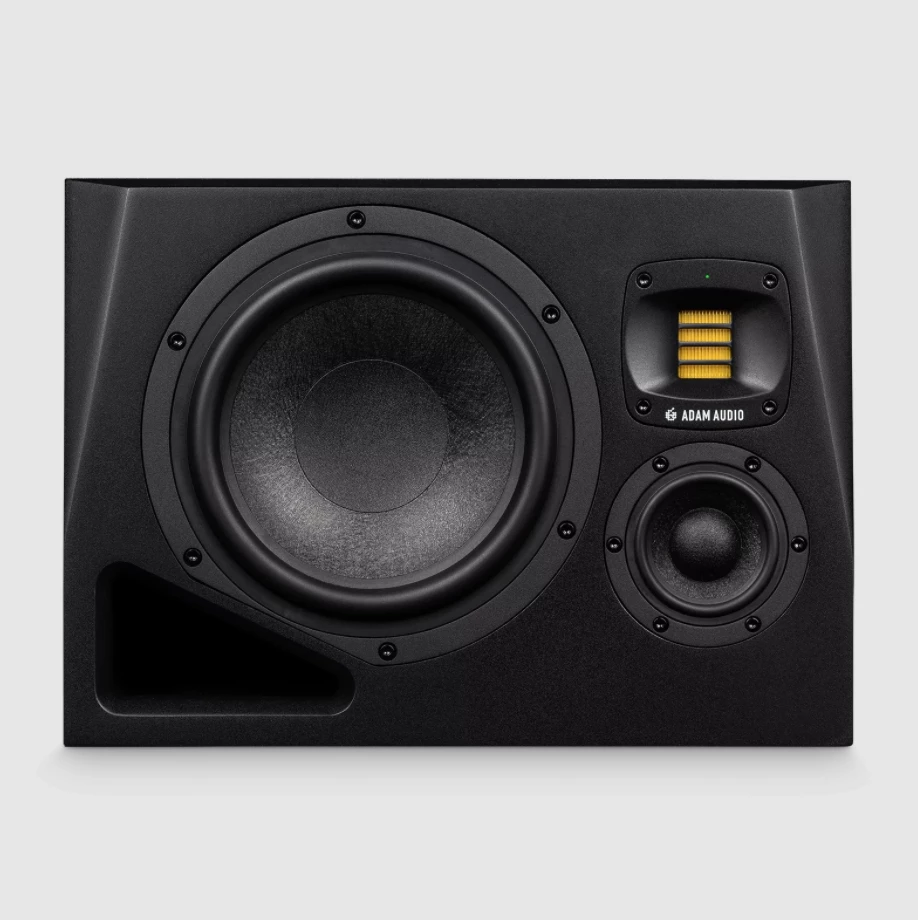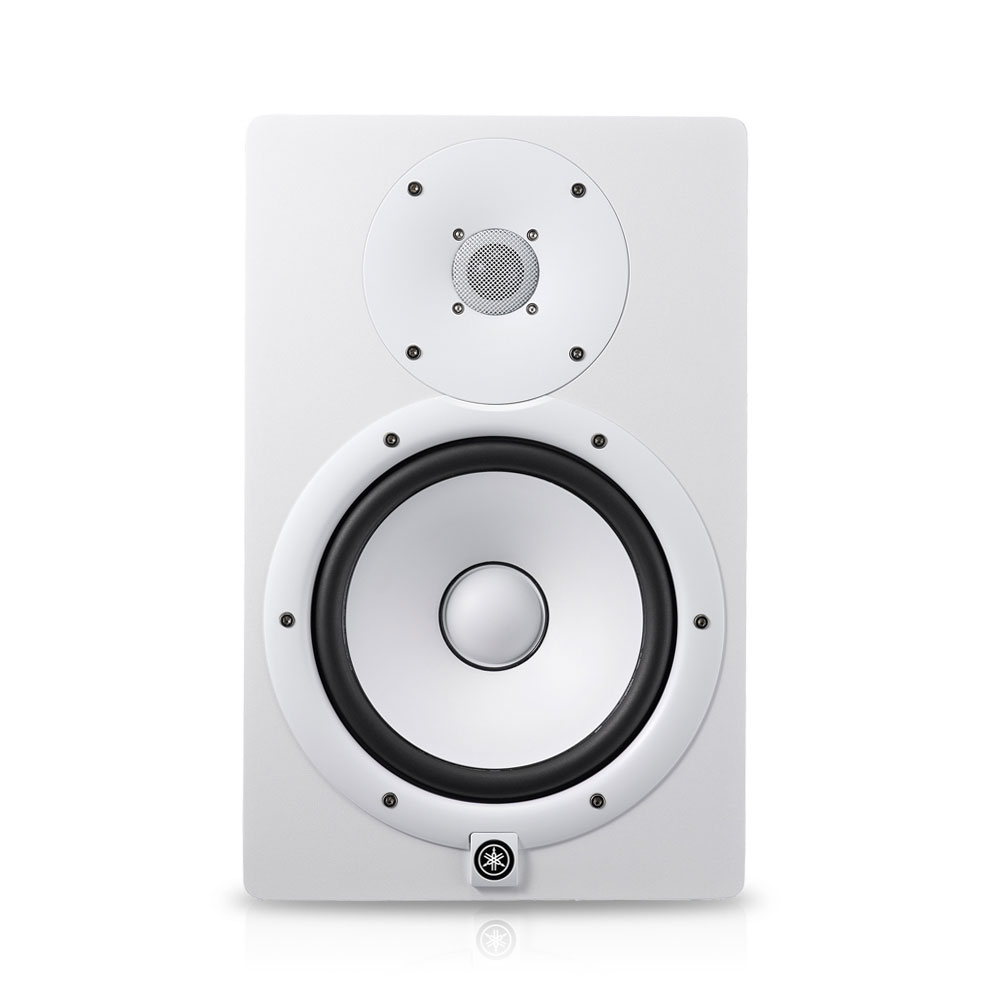Fluid Audio FX80 Active Studio / Nearfield Monitor
The most striking feature of the FX series is the coaxially mounted tweeter, which is not - as is often found - a horn, but a dome tweeter. And the computer-calculated cabinet shape not only looks extremely cool, but also decisively optimizes the dispersion characteristics of the FX80.
In the center of the 8" woofer is a 1.2" silk dome tweeter. The unique design in this price segment creates a point source, - due to the principle without disturbing phase deviations or overlapping of the individual drivers. The frequency response of the FX80 ranges from 35 Hz to 22 kHz. In many (home) studios, space is rather limited, which can have an unfavorable effect on the acoustics. Therefore, the FX80 is equipped with EQ switches that allow you to control both the influence of rather acoustically difficult rooms and the resonances of a wall directly behind the speakers. On the back, users will already find important information about the function of the DIP switches, and the user manual describes their function in detail.
The FX80's "Class D" power amplifier always delivers a cleaner and constant output and sufficient headroom. The integrated high-performance DSP takes care of the digitally controlled crossover, resulting in exceedingly consistent sound reproduction. This makes the FX Series reference monitors the perfect solution for demanding home as well as professional recording studios. The diode on the front panel not only informs about the on/off/bypass status of the FX monitor, but also provides assistance in the precise alignment of the speakers at ear level.
High-quality drivers in a solid cabinet form the basis for transparent reference monitors, but only extensive listening tests and meticulous calibration of the crossover make this monitor a reliable workhor with absolutely precise low end - and thus a true Fluid Audio Box. A mix created on the FX80 will never disappoint on other audio systems.
Features
perfectly tuned nearfield monitor
coaxial design
low-noise 110 watt Class-D power amplifier
front bass reflex port
EQ for adjustment to the installation site
low frequency cutoff (flat, 60Hz, 80Hz, 100Hz)
detented volume control
compact design
auto-standby function saves energy
Technical Data
Cabinet: vinyl-coated MDF
Woofer: 8"
Tweeter: 1,2"
Power: 110W
Crossover frequency: 2.4 kHz
Frequency response: 35 Hz - 22 kHz
Maximum sound pressure level: 95 dB SPL
Signal-to-noise ratio: >89 dB (A-weighted)
Inputs: XLR and jack (balanced), RCA (unbalanced)
Input impedance XLR/jack: 20 kOhm
Input impedance RCA: 10 kOhm
Power supply: internal power supply, 110 V/220 V, switchable
Power indicator: LED (blue= active, red= standby)
Dimensions (WxDxH): 340 x 254 x 295 mm
Weight: 7,8 kg
Login

